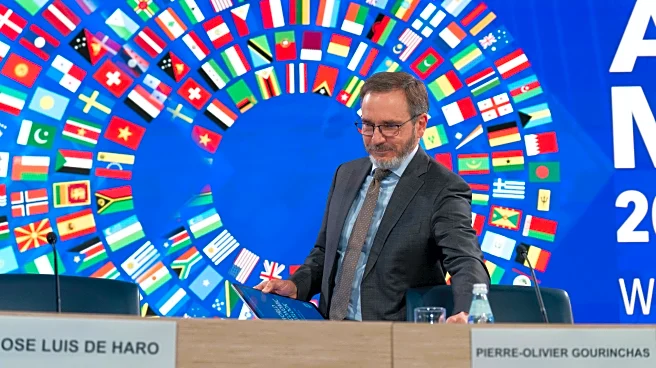What's Happening?
The Trump administration has announced a significant increase in the application fee for H-1B visas, raising it to $100,000. This change makes the H-1B visa the most expensive employment visa globally, surpassing the UK's work visa by 15 times and the previous
US fee by 50 times. The H-1B visa is crucial for employing foreign workers in specialty occupations such as technology, science, and medicine. Currently, there are approximately 700,000 H-1B visa holders in the US, with over 60% working in computer-related fields. The majority of these visas are issued to Indian nationals, who play a vital role in the US and Indian IT industries.
Why It's Important?
The fee hike is expected to have significant repercussions for the US and Indian IT sectors. The H-1B visa has been instrumental in fostering innovation and productivity in the US, particularly in the tech industry. By increasing the cost, the administration aims to address concerns about the visa program being exploited to replace American workers with lower-paid foreign labor. However, experts argue that skilled immigrant workers contribute substantially to innovation and wage growth in the US. The new policy may lead to offshoring work or redirecting skilled labor to other countries, potentially disadvantaging the US in the global STEM field.
What's Next?
The US administration faces the challenge of balancing its position as a global leader in STEM while addressing domestic concerns about job security. The ideological motivations behind the fee increase may provide short-term political gains but could result in long-term economic consequences. The policy's impact on the US labor market and innovation ecosystem will be closely monitored by industry stakeholders and policymakers.
Beyond the Headlines
The decision reflects a broader ideological stance within the Trump administration, prioritizing anti-immigrant sentiments over market-driven considerations. This approach may hinder the US's ability to attract skilled labor necessary for technological advancements. The policy could also influence other countries' immigration strategies, potentially leading to a shift in global talent distribution.















